The absence of ancient Hindu structures in Kashi is something I have always lamented about. The shrines are certainly ancient, and that is something that has always attracted me to the city. However, I miss the beauty of the ancient structures that we see at other sites. This feeling is intensified when I see marble and concrete and tiles in temples that once would have been beautifully adorned with evocative sculptures, and worn by the passage of time, touched by the hands of seekers who came before. This time , this desire to see some remnants of an ancient Hindu structure in Kashi came true when I managed to visit the Kardameshwar Temple. The Kardameshwar temple is not one of the main temples in the city. It is part of the temples on the Pancha Kroshi yatra, a pilgrimage which takes one on a circumambulatory tour of the whole city. The temple is located on the outskirts of the city, on the western bank of a tank called the Kardama Kund. The Kardameshwar temple is one of the...
The name ‘Hazara Rama Temple’ makes you wonder – a thousand Ramas? Would there have been a thousand idols of Rama here? Or just a thousand carvings depicting Rama? And why the word ‘Hazara’, which has its origins in Urdu, and not ‘Sahasra’ – which is the Sanskrit equivalent? Or is it simply a corruption of the word? As it turns out, though there are a thousand (or more) depictions of Lord Rama on the walls of this small, but beautiful temple, the name might have something to do more with its location than the Lord it was built for. ‘Hazaramu’ is the Telugu word for audience hall or the entrance hall of a palace, which is where this temple is located. This might have been the private temple of the Vijayanagara kings, which is probably why it is not as huge as the other temples in the city.
This is one of the few temples where every inch of the outer wall is filled with carvings depicting scenes from the Ramayana. By the time we visited this temple, it was already dark, and my camera could not really succeed in bringing out the beauty of the individual panels….
 |
| Most of the scenes on the outer wall depict elephants and horses - at least thats what we could see in the dark! They looked like armies.... Rama's army??? |
Left to me, I could have spent hours poring over each panel, identifying the scenes depicted on them, and telling Samhith the story, besides of course, photographing each and every one of them!
 |
| Scenes from the Ramayana on the inner wall.... If I had time, I would have photographed scenes separately so that I could have written this post in the form of the story.... Another time :( |
 |
| There arent only scenes from the Ramayana... Krishna figures too, quite prominently... |
 |
| and here is one of Mahishasura Mardini |
However, it was already dark, and the fact that the temple was empty except for our group only heightened the eeriness already present…..
Probably it was the almost complete darkness in the sanctum, which had some beautifully carved pillars I managed to capture……
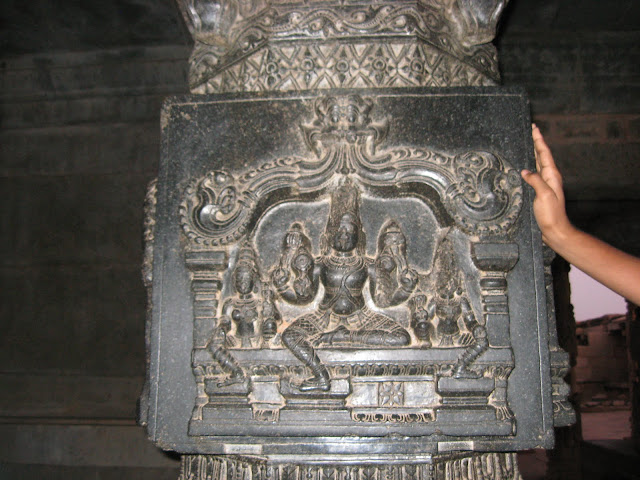 |
| Vishnu - with Sridevi and Bhudevi |
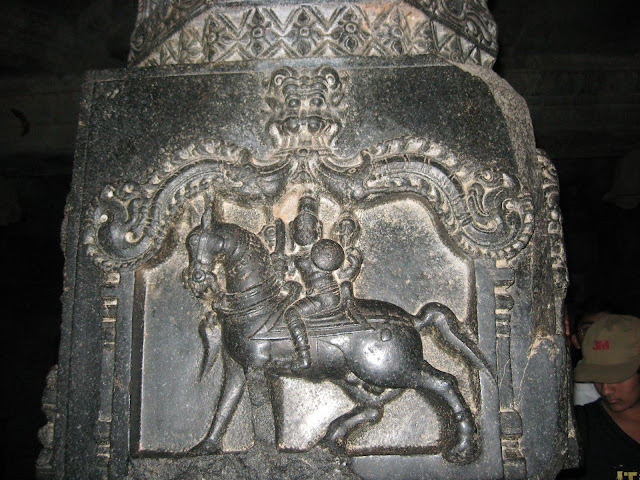 |
| This, it seems is Kalki... I love this representation on a horse instead of the ones we see today with a horse-face! |
 |
| Hanuman |
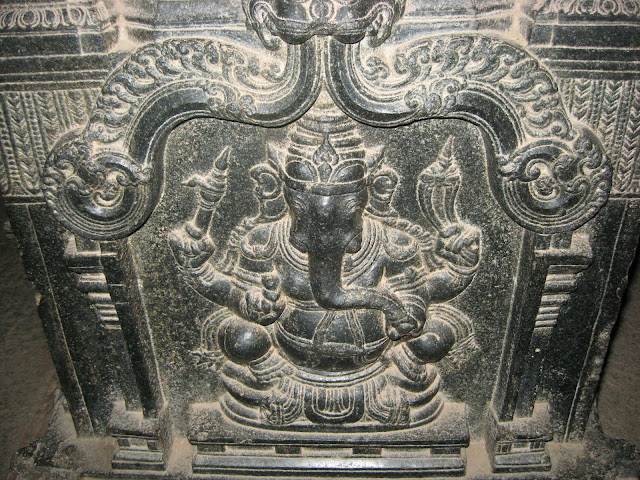 |
| Ganesha |
Or probably it was the destruction that the temple had experienced when the invaders had hacked at the head of every single figure on the gopuram…..
There was something about the temple which prevented me wandering off alone with my camera, as I normally do, and I stuck with our group, keeping in mind that the next time I was here, I would make it a point to keep at least half a day aside for this temple alone!
Related articles
- Hampi Part 2 - Stones do Speak - A Photo feature
- Hampi Part 3 - A Short History of the Vijayanagara Empire
- Hampi Part 4 - The Virupaksha Temple
- Hampi Part 5 - The Hampi Bazaar
- Hampi Part 6 - Krishna Temple
- Hampi Part 7 - Vitthala Temple
- Hampi Part 8 - Narasimha and Badavalinga
- Hampi Part 9 - Hazara Rama Temple


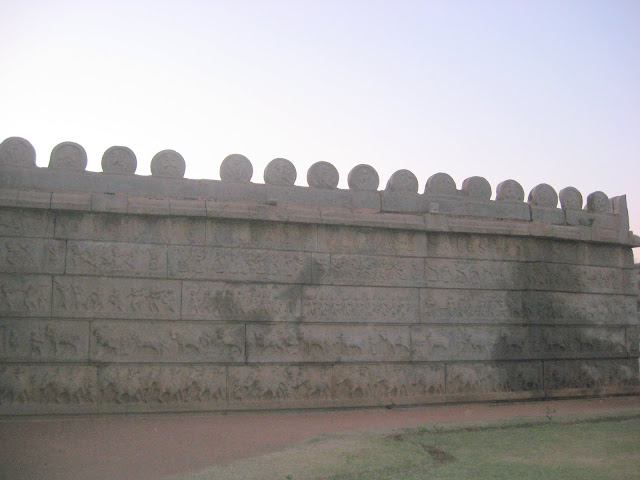


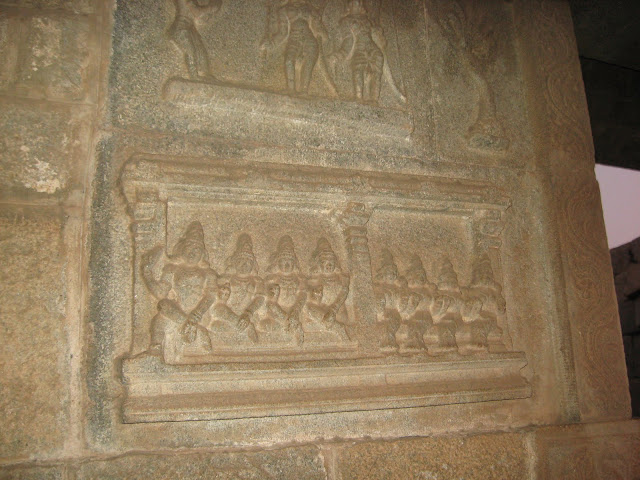





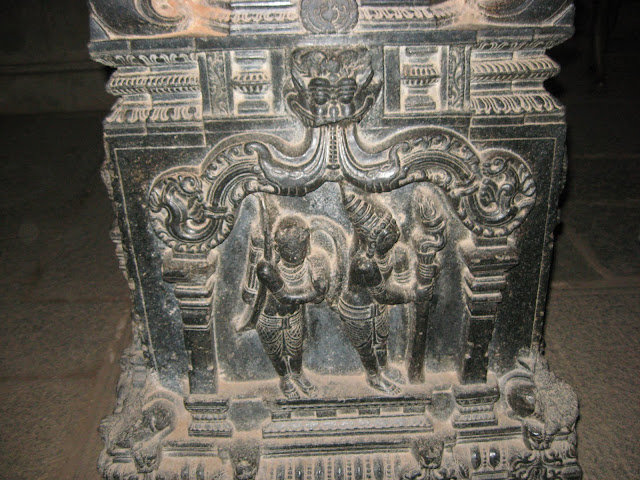

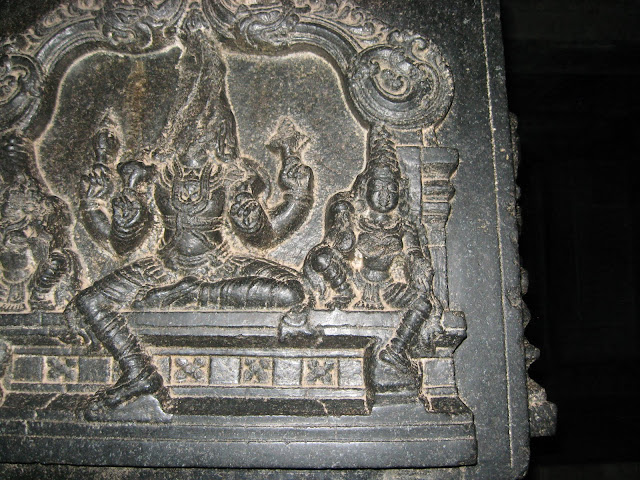


The panels on the outer wall may not be Lord Rama's army. In fact if you notice it appears in one of the panels next to the gate certain horse traders who appear like Arabs are showing the horses to a stately nobleman /King.
ReplyDeletequite possible!! i am only a layman when it comes to this!
ReplyDeleteNice. Truly knowing Hampi I think will take a lifetime.
ReplyDelete